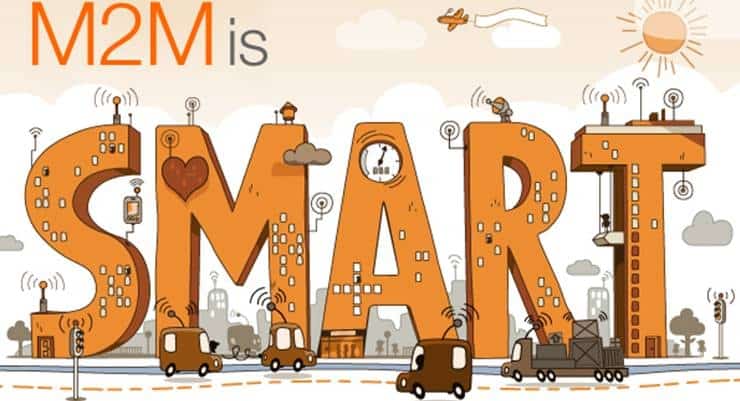The Connected Cars services market is expected to deliver revenues of more than USD16.9 billion for mobile operators by 2018 as it continues to grow at an expected CAGR of 25% over the next five years. According to the leading research firm Infonetics, this rate of growth is 21 times the growth rate expected on the mobile operator's traditional voice and data revenues.

Major mobile network operators (MNOs) are tapping into this fast growing segment, unveiling new initiatives, specifically partnerships with auto-makers to start rolling out a host of connectivity solutions for vehicles, covering both passenger cars as well as commercial vehicles. Very recently, Orange, one of the world's largest communications service provider announced the partnership between its business-to-business(B2B) arm Orange Business Services with Tesla, a leading auto-maker in France to provide 4G LTE connectivity to its Model S vehicles. Orange Business Services provides a wide range of enterprise services including cloud computing, enterprise mobility, M2M, security, unified communications, videoconferencing, and broadband. The agreement enables Tesla drivers to have access to a whole range of in-vehicle services including navigation, internet radio, web browsing and remote diagnostics and over-the-air updates of M2M software. This latest collaboration adds onto Orange Business Services' existing portfolio of Connected Car clients which includes big names such as Renault and PSA Peugeot Citroën.
Connected Car Aftermarket Products and Services
In a recent briefing, Tara Neal and Prushothma Rao of PCC Mobile Broadband spoke to Samuel Loyson, Director of the Connected Car Division in Orange Smart Cities, one of the six strategic programs under Orange Business Services, on the company's foray into the Connected Car segment and into the M2M space at large. According to Samuel, Orange’s Connected Car service offerings are divided into two categories, the first providing connectivity and the second, providing aftermarket products and services. While the former sees operators bringing mobile broadband connection to the car, the later focuses on Business-to-Business services such as fleet management and usage-based insurance as well as end-consumer products such as navigation and infotainment services. Samuel said that while the connectivity service comes with a longer lifecycle and is relatively stable, the aftermarket products and services segment is very dynamic and fast moving, creating a very competitive environment yet offering huge monetization opportunities not only for MNOs but also for other players in this segment including content aggregators, content providers and application developers.
What is Expected in the Market?
Samuel highlighted that for service providers to build a strong market in the M2M space in general and the connected car vertical in particular, they must be able to fulfil two major criteria – one, being able to provide their clients solutions that cover a wider geographical base, for example a telematics service that provides an auto-maker coverage for its vehicles across all of Europe, and two, being able to deliver integrated solutions that come with powerful tools that allow clients to manage these services from their end. The latter enables clients to control and manage the connectivity service (for example, activate SIMs and activate plans) and additionally, using the provided APIs, integrate the service to their business processes. Orange’s presence in more than 220 countries across the globe and the extensive partnerships, roaming agreements and liaisons it has established with other major service providers puts Orange at an advantage in offering global M2M connectivity solutions, said Samuel, in addition to its strenght in providing integrated and enhanced solutions for its clients.
In-Vehicle Infotainment and Communication Services
More interestingly, Samuel shared his insights on the next stage of growth for the connected car market, which will be seeing in-vehicle content-based services such as navigation and infotainment taking center stage. This segment differs significantly from traditional M2M services provided for the likes of fleet management companies and automakers as it requires far more bandwidth on the back of rich applications used by today’s consumers. Music, movies and sports will use far more data than the basic telematics, a reason why operators will not be able to bundle connectivity with their integrated service offerings as they did for their traditional M2M connectivity services. The higher data consumption on in-vehicle infotainment services for example, will require MNOs to establish partnerships with local partners and service providers in countries/regions where these services are consumed to tackle the high roaming costs and ensure that customers are provided with attractive packages for their in-vehicle infotainment services with charges aligned to their local data plans and with a single point of interface for the management of all their wireless subscriptions.
The Car's Digital Screen as Another Device on Shared Plans
With the Connected Car picking up speed, subscribers can expect to see the Connected Car service being incorporated into their other mobile broadband offerings. Samuel foresees the introduction of more innovative service bundles that will include the car's digital screen as another device within the mobile operator's shared plan offers. These shared plans will enable both data and content, in particular premium content to be shared across more 'screens' and extend the idea of the 'TV Everywhere' to vehicles.
Bringing Together V2V and Wireless Connectivity
Samuel also shared several other exciting developments in the connected car market, including the embedded SIM technology which enables new vehicles to be ‘connectivity-ready’ in any country or region. The embedded SIM technology leverages over-the-air SIM configurations that allow a single hardware to adapt to any providers’ network. Samuel also brought up the developments in the Vehicle-to-Vehicle (V2V) space which is seeing the combination of the V2V technology with wireless connectivity that enables smart devices such as smartphones to act as intermediaries for V2V and vehicle-to-driver communications, circumventing the existing challenge in the adoption of V2V which requires all vehicles to be fitted with the technology in order for it to work.
With multiple technologies being developed and pioneered to bring connectivity to cars, the coming months are expected to see a lot more action in this space, especially among MNOs, auto-makers, solution vendors, content aggregators and app developers. Solution providers in particular will have their hands full in developing the Connected Car services platform that enables Connected Car service providers to customize, deliver, manage and monetize these services efffectively while delivering the best content and user experience for drivers.
- This article is co-authored with Tara Neal, Executive Editor at PCC Mobile Broadband.
The following is infographics from Orange Business Services depicting the adoption of M2M technology across various application verticals.






















